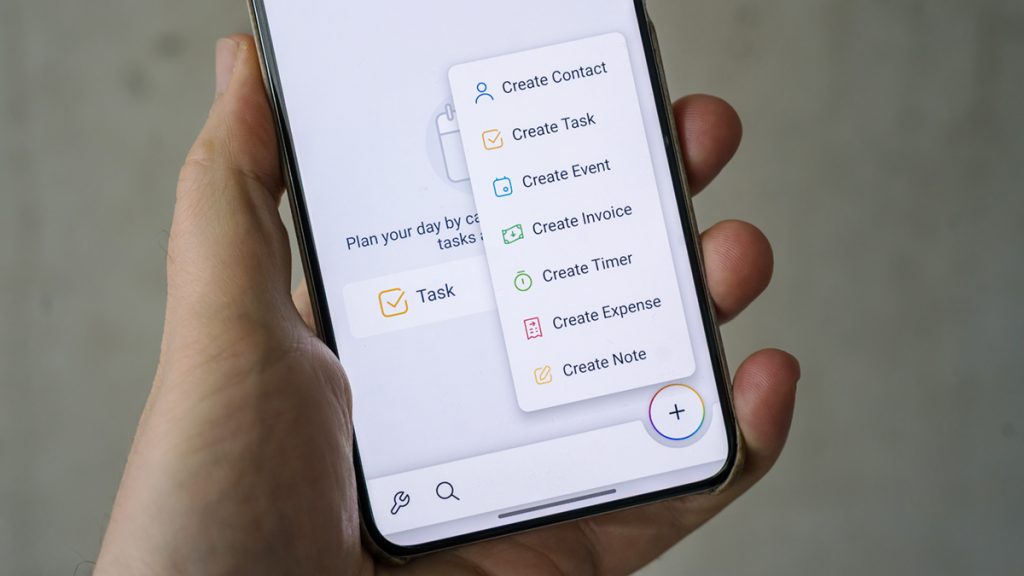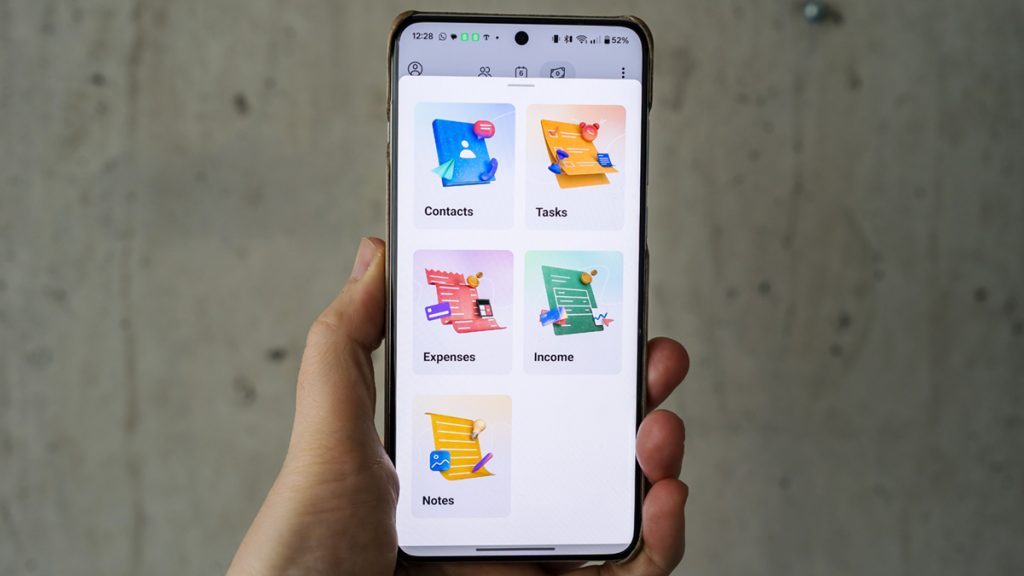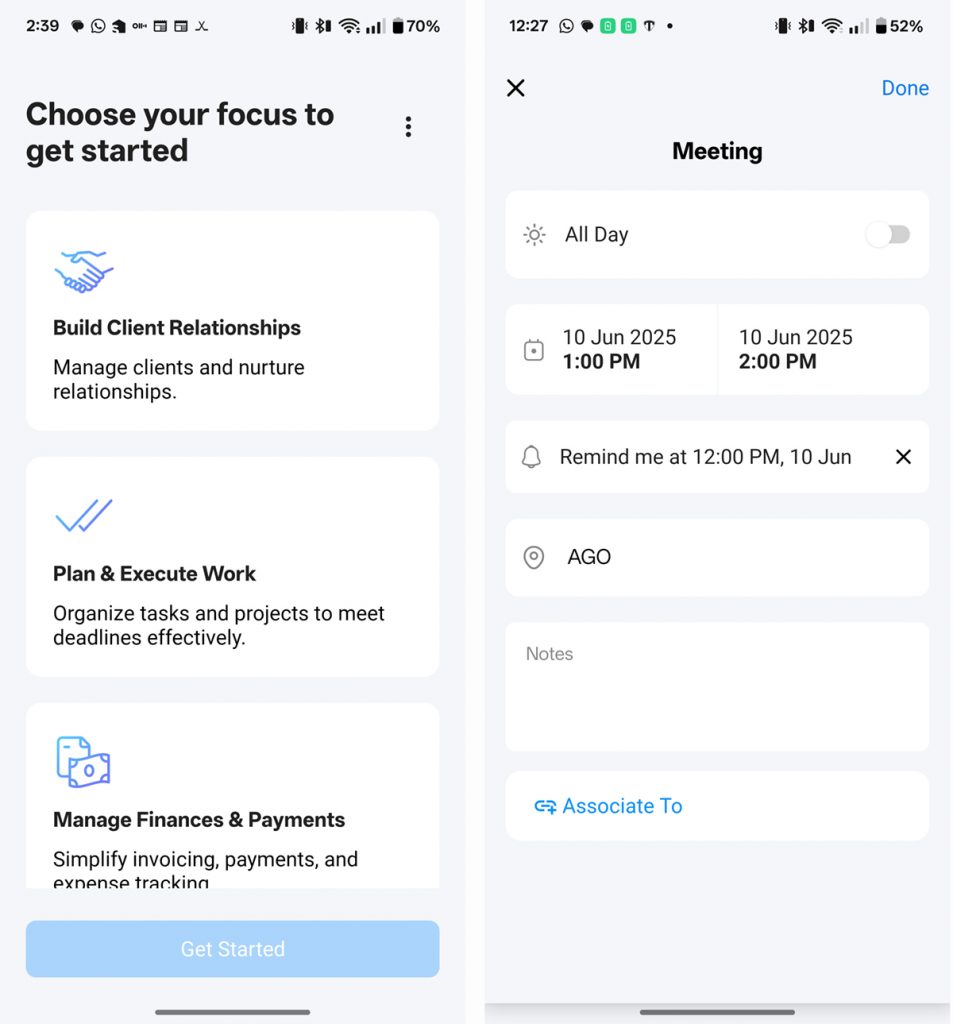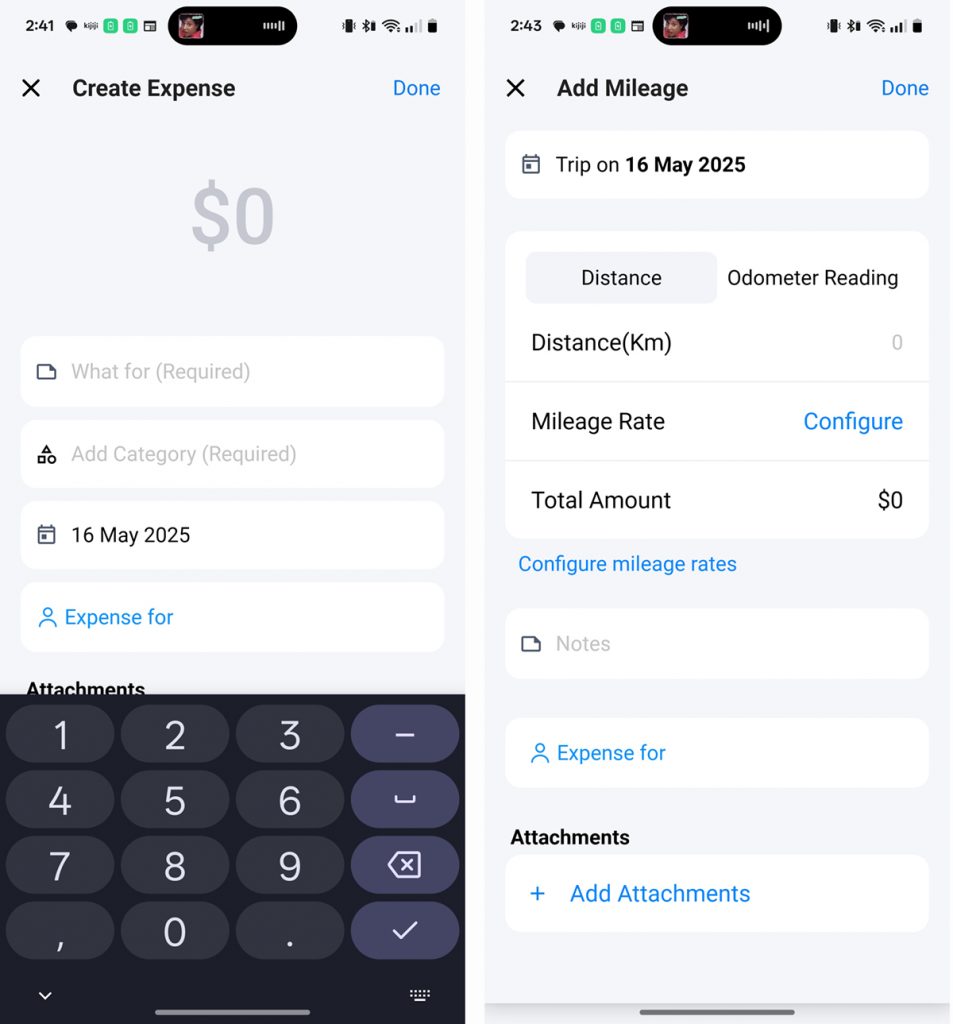The term “solopreneur” is a fun way to refer to a sole proprietor or self-starting business owner, and that’s exactly who Zoho Solo is built for. Think freelancers, independent consultants, creators, and small business owners; the very ones who have to manage their businesses single-handedly.
Zoho built its reputation as a software developer by creating tools for both enterprise and small to medium-sized businesses (SMBs), but Solo is a different approach. For starters, it only works on mobile devices (iOS and Android), and moreover, it doesn’t tie in to all the other Zoho products. That latter point can be a vexing limitation, especially for those already invested in the company’s ecosystem, unless it doesn’t matter if you prefer to have that kind of separation.
What does Zoho Solo do?
Solo’s premise is to streamline business operations by including as many features as possible in one place. Rather than use multiple apps, you can get by just using this all-in-one package. That’s convenient considering how many hats a solo business owner must wear to keep things running as smoothly as possible. Its entire premise hinges on reducing friction in managing tasks, clients, finances and communications.
“It’s using Zoho Finance invoicing system and the APR system for its payments acceptance and managing your invoice and so on,” says Chandrashekar LSP, Managing Director at Zoho Canada. “Same thing with note-taking capability from Zoho Notebook, as well as the calendar component. Clearly, these are the things any solopreneur would need to begin with.”
That doesn’t mean that every element within the app is a derivative of a bigger Zoho product. Most are “selective”, in part because Solo is mobile-only, so there’s not even a browser-based side to it. You use it on a smartphone or tablet, and that’s it. Zoho keeps it this way to accommodate the on-the-go nature of many single-owner businesses. If you need to track an expense, plan appointments, manage cash flow and add contacts, the app does all of those things.
Just as importantly, it acts as a task manager, letting you input not just appointments but also any “to-do” items that are sensitive to either time or resources. This also reflects the type of business involved. For instance, a freelancer with several clients can keep tabs on all deliverables in much the same way a solo merchant can manage a customer list. Hence, Solo lets you create and send invoices but not receipts since it’s not a payment platform unto itself unless you’re willing to pay.
“Your business goes with you, so you don’t have to log in or do anything elaborate,” says LSP. “For example, if you’re going to be a consultant for some kind of a project, how can you basically participate and collaborate in those areas as well? Maybe there’s some project management layer where you can invite other contractors to fulfill some of the service that you take up. That’s something you can manage with a project management layout.”
Solo isn’t quite that intricate, particularly if the project is multi-layered and requires features from other apps to be involved. For instance, while you can create a note that includes bullet points, lists and photos — and even directly share it with others — it’s not necessarily easy to plug that into something in a third-party app. That can matter if your business is in a sector that uses specialized software.
Free vs. Pro subscription
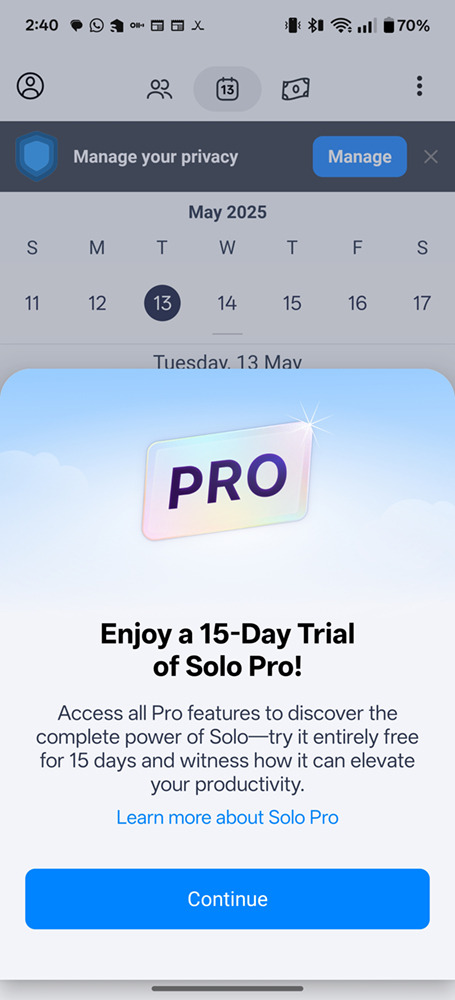 One of the things I like about Solo is that it allows you to manage more than one business separately within the app. If you have a side hustle or like to use the app to manage expenses for your day job at the same time, keeping those two at arm’s length is easy. You can do all this for free to start, though there is a paid Pro Edition in case you need more.
One of the things I like about Solo is that it allows you to manage more than one business separately within the app. If you have a side hustle or like to use the app to manage expenses for your day job at the same time, keeping those two at arm’s length is easy. You can do all this for free to start, though there is a paid Pro Edition in case you need more.
The Pro Edition does everything the free one offers, only takes certain things further and adds additional features. For example, the free tier limits you to 100 contacts and invoices per year and basic reporting, whereas Pro makes that 100 contacts and invoices per month, along with more elaborate reporting. On top of that, you get a proper mileage tracker, business card scanner and more extensive paid expense details.
As I mentioned earlier, payments offer fewer options with the free version, but Pro lets you integrate with multiple payment gateways. Invoices are also more personalized because you can design them with your own logo and branding.
Zoho Solo Pro Edition costs either $13.99/month or averages $11.25/month if you pay for a full year. When you first sign up for Solo, you get to try Pro for 15 days before it reverts to the free tier.
The pros and cons
Use caution before paying up because there are nuances involved here. Solo is missing some key integration that is otherwise available on other platforms. A prime example is the lack of integration with Zoho Mail, an excellent app that ties in wonderfully with Zoho One or CRM (Customer Relationship Management) and other products. You can’t just add email threads related to a certain task, client or customer, leaving you with only the option to manually copy and paste what you need.
That’s not practical for a number of reasons, but it’s emblematic of Solo’s limited scope with this. It proves a worthwhile tool to just keep things organized above all else. While you may prefer to set up appointments, contacts, notes and invoices in other preferred apps, there’s a convenience in keeping all that in one space, especially since these features do feel more integrative within Solo. Additionally, your data saves to the cloud so it’s safe in case you lose your phone.
“Since we had built so much for the SMBs, the next step was to package (tools) in a way that is more consumable. It’s the same set of capabilities. It’s just the packaging that has changed,” says LSP.
The challenge is that staying organized may be different from one solopreneur to another. Zoho says it’s looking to add “components and capabilities” though it’s not clear what it will prioritize. Where to start is obvious considering Solo’s lack of integration with other Zoho apps can feel limiting and perplexing all at once.
Plus, it can get confusing because there are other tools that may seem like they overlap. Zoho Bigin is a “simplified” CRM tool for small businesses, which makes more sense if you have employees or need better integration and extra collaborative tools within it. It has both browser and desktop apps, a free tier and multiple paid tiers, but it may not feel as simple as Solo does. Despite that, it’s not out of line to view Bigin as a graduated tool if or when Solo becomes too limiting.
Should you use Zoho Solo?
The benefit of Zoho Solo is that it doesn’t cost you anything to try it out or use it for a while. Even if it can’t check every box, the convenience in having at least some of these tools in one place feels efficient. It also naturally depends on the kind of business you’re running. There may be enough here to stay coordinated and on top of what you’re doing and need to do but it’s not hard to imagine wishing there was more.
I’m not sure what Zoho plans to do to grow it further; it’s just easy to see that plugging in more key apps or features within its ecosystem makes the most sense. There are tough competitors in this space to consider as well. Moxie (formerly Hectic) doesn’t have a free tier but it offers a deeper package of options in its Starter tier ($12 USD/month), that goes even further with the Pro tier ($25 USD/month). Then there’s Honeybook, which arguably dives even deeper with AI-driven automation and robust tools that integrate things like email and third-party notes.
Moreover, they both aren’t just mobile apps, letting you access the same portals and information via a browser, too. You pay a price for it, as Honeybook is even more expensive starting at $36 USD/month. You can cut that down to $29 if you choose an annual plan. The catch is that the AI features fall under the Essentials package that starts at $59/month (falling to $49 under an annual plan), a significantly bigger expense for freelancers and solopreneurs working on shoestring budgets.
The old adage of “you have to spend money to make money,” remains prescient for anyone who achieves a measure of success in starting a business. Investing capital is, after all, the key way to try hitting a stride. Zoho Solo feels like a cost-effective way to at least get things going but if your business grows, it may be a sign that you need to spend more to get the tools necessary to continue building.

